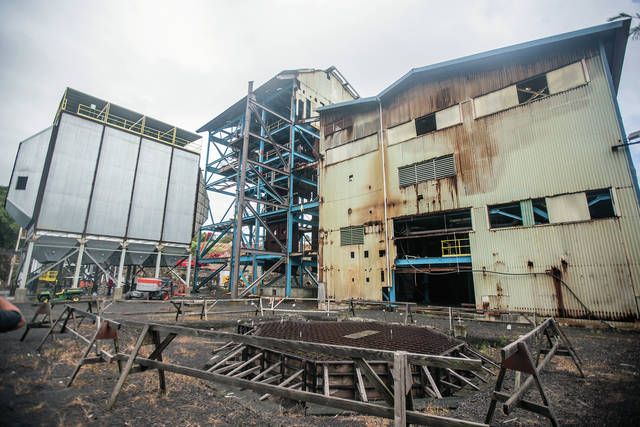If Hu Honua Bioenergy’s long-delayed biomass power plant were to go online by the end of 2018, Hawaii Electric Light Company’s ratepayers would see increases in their electricity bills, according to an analysis HELCO filed Wednesday with the state Public Utilities Commission of a proposed power purchase agreement.
HELCO’s study used as its baseline the most recent power supply improvement plan, or PSIP, filed by HELCO in December, which includes how to gather 100 percent of energy from renewable sources such as solar, wind, water and biomass by 2045, a goal required by state law.
The computer simulation model used by the utility found the benefit-to-cost ratio of Hu Honua’s proposal is 0.9. A ratio of 1.0 or higher indicates the benefits exceed the cost.
The analysis found a consumer using 500 kilowatt-hours of electricity per month would initially experience a $5.31 bill increase in 2019. The increase would gradually decline, and by 2037 customers’ bills would be 47 cents higher than in 2018. Starting in 2038, ratepayers would start to see monthly savings, and in 2048, the final year of the 30-year deal, the total monthly savings would be $5.76 a month.
The average ratepayer’s bill would increase an average of $2.26 per month over the 30-year contract period.
“We have a renewable energy project and according to our analysis, it leads to bill increases. That was the point where we could not come to agreement to Hu Honua,” HELCO President Jay Ignacio said Friday. “So we put … this whole set of information before the Public Utilities Commission, and they have the authority to decide if they agree with our analysis. And if they do, and even if it does lead to bill increases, would the other benefits that Hu Honua is going to describe to the commission — are those benefits worth the premium in price?”
According to HELCO’s filing, those benefits “include, but are not limited to, job creation, the need to comply with (renewable energy) statutory requirements … promoting the long-term viability of local agriculture, reduction in fossil fuel consumption, reduced fossil fuel emissions, reduction in pricing volatility (and) increased energy security.”
Hu Honua is seeking PUC approval for preferential price rates provided by law for renewable energy produced in conjunction with agricultural activities which, in this case, are the forestry, logging and hauling necessary to provide eucalyptus wood for the half-completed, long-stalled 21.5-megawatt bioenergy plant in Pepeekeo.
The PUC has never granted a request for preferential rates under the law. The baseline for HELCO’s computer model analysis included ownership of the Hamakua Energy Partners power plant, but the PUC rejected the utility’s proposed $84.5 million purchase of the fossil-fuel facility on May 4.
“In our plan that we filed in December … we assumed that it was Hawaii Electric Light ownership, so to be consistent, we assumed ownership in this analysis,” Ignacio said.
HELCO has filed a motion with the commission requesting additional time “to seek clarification and/or reconsideration” of the commission’s denial, Ignacio wrote to commissioners in a cover letter to Wednesday’s filing.
The letter stated Hu Honua and Hamakua Energy Partners “are inter-related in that they individually and jointly have a significant bearing on the operation of the Hawaii Electric Light system,” and said HELCO is now modeling a scenario where Hamakua Energy stays online only until 2030 instead of 2045, as the December report assumed.
Harold Robinson, president of Island BioEnergy, parent company of Hu Honua, said in a written statement his company is “still reviewing HELCO’s price modeling.”
“We are confident in the third-party analysis submitted to the PUC, which shows Hu Honua as less expensive than the utility’s existing oil-fired plants we are designed to replace,” Robinson said. “We are pleased HELCO’s report identifies numerous non-price aspects of the project such as job creation and jumpstarting the agriculture industry. We’re hopeful the PUC and consumers will see Hu Honua is a huge benefit for the state.”
Email John Burnett at jburnett@hawaiitribune-herald.com.






